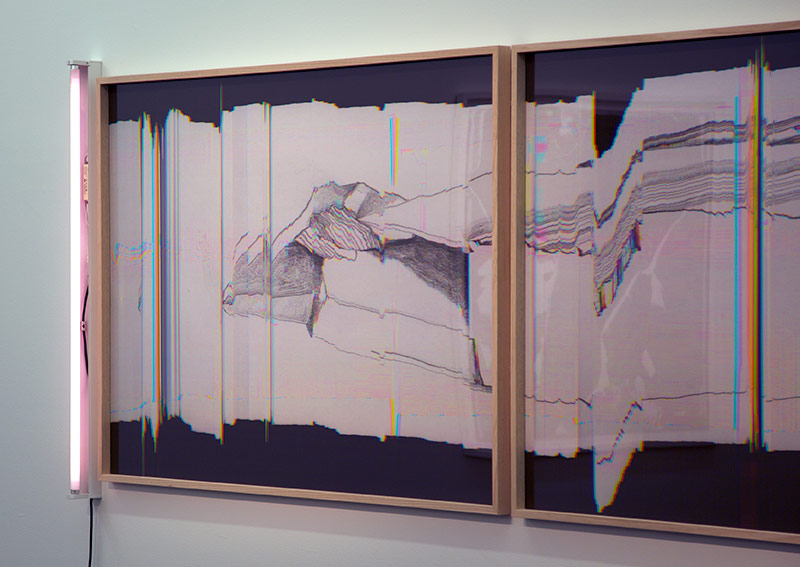James Geurts: Reading the Seismic Field

James Geurts’s latest project, Seismic Field, continues his ongoing investigation into the way we perceive the contemporary landscape.
Following on from the exhibition James Geurts held last year at La Trobe Art Institute, Bendigo, with the same title, this latest iteration at GAG is unique in that it brings together these site-specific works in a new narrative, a new dialogue.
“Seismic Field looks at the relationship between, geophysical forms, consciousness, the way we relate to landscape through layers of cultural strata and perceptual layers through which we read the landscape,” says Geurts.
“The images talk to each other even though they are generated from different landscapes, or geopolitical forces that shape meridians, or other ways we read the landscape.”

Geurts works across media such as drawing, photography and sculpture and there is a lot of site action in his practice where he goes out into the landscape to generate the work. This process usually starts with drawing, as Geurts sees it as a way into the site.
“The drawing becomes the material and then the process becomes the material in the landscape. Even though the drawing comes from the landscape it is worked back into the landscape to become something else,” says Geurts.
In this project he intervenes in the processes of scanning and Polaroid photography as site actions, letting weather, temperature, force and the pulse of the body disrupt the form and colour field, blurring the lines between geology and technological praxis.
“It’s about where cultural forces and geological forces might meet. It’s about using technology and the handmade as some sort of intervention into how the site is being understood and read,” says Geurts.
The large feature drawing of the exhibition titled Seismogram was created by producing a drawing at the site of a fault line. Then, using an old flatbed scanner that had been reconfigured into a hand scanner, Geurts slowed down the process of the scanning. He allowed the atmosphere, the dirt, dust and natural light, of the place to affect the scanning process.
“You end up with these shifts and rifts and the colour field abstraction. It turns what was a special work on paper into something between a site action, a sculpture, a photograph and a light work. It brings all of these elements together,” says Geurts.

The large format Polaroid photographic work in the show was generated at a geological site where a fault line met a gold mine. Geurts has allowed the weather to affect the processing of the Polaroid – it affects the chemicals in the layers of the Polaroid as if they are strata layers, creating a new or imagined landscape.
“I’m interested in the landscape we hold in our imagination as well and how that forms and what sort of language it is we develop around this,” explains Geurts.
While these works are conceptually driven, Geurts also allows for things to happen in the space. “A lot of my work is inherently propositional so it’s proposing a force or proposing a perceptual line – the way we put them together as an installation will be propositional, proposing those things talk to each other.”
James Geurts: Seismic Field
GAG Projects
Until Friday, December 21